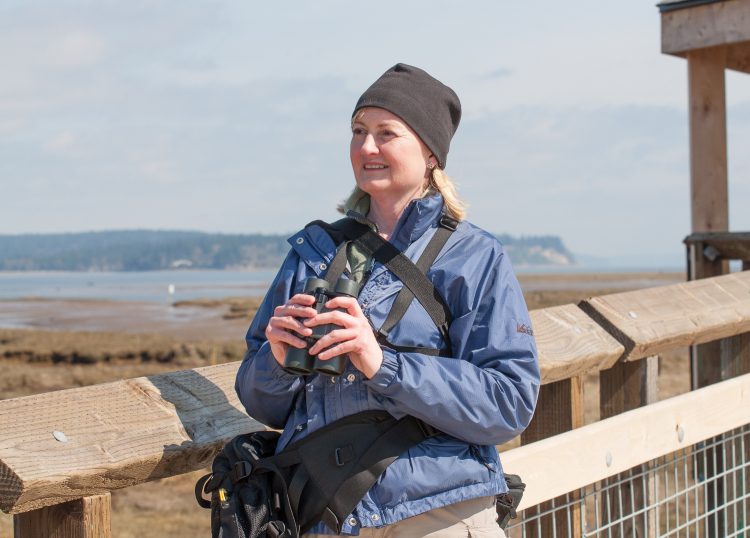If you happened to take a cold-weather walk in the Washington Park Arboretum last January, you might have spied Heather Roskelley, ’83, wearing a down jacket and hat with ear flaps, standing still and silent near a collection of mountain ash trees.
Temperatures during the day hovered slightly above freezing, but if you’d left and come back an hour or two later, Roskelley would still have been glued to the spot. When it comes to photographing birds, Roskelley has the patience of Job and the persistence of a suitor courting his beloved.
The patience, persistence and skill with her Nikon camera allowed Roskelley to capture a photo of the varied thrush that took top honors in the amateur category of the National Audubon Society’s annual photography contest. Quite a thrill for Roskelley, especially since the competition drew more than 5,500 entries. The varied thrush is notoriously shy and elusive, but Roskelley knew the birds consider the ash trees’ berries a great winter treat.
“I went there on four of the coldest days this past winter, and every day they were either in the tops of the trees or in the back branches—or not there at all because of a marauding Cooper’s hawk. On the last day, I saw a bird in my peripheral vision. I walked slowly around to position myself,” Roskelley told the Audubon Society. “Luckily, the thrush was more interested in the tree’s berries, and I was able to capture this eye-level shot.”
Roskelley, who lives in Tacoma and works as a consultant in advertising and marketing, took up birdwatching seven years ago because nature is her passion.

Heather Roskelley
“Often I have a target bird in mind when I am going to a place. Sometimes I get a photo and sometimes I get a totally different bird,” she says. “Those trees are the most beautiful in October and November, but the birds don’t generally eat the berries until December into January. I think it’s because of fermentation; they’re more edible then.”
In addition to a target bird, Roskelley also searches for what she calls “my nemesis bird.” At the time she talked with Columns, her nemesis bird was the white-tailed ptarmigan, which can be found at Mount Rainier.
“I’ve been going up there the last six years and everyone seems to see it, even people who aren’t birding, but I can just never see the bird,” she says. “It’s kind of embarrassing.”
We think with her patience and persistence it’s just a matter of time before Roskelley captures this smallest bird in the grouse family, at least on camera.